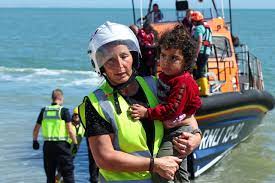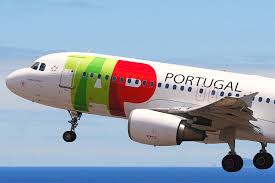EU is stuck with its one-trick refugee policy

London: The European Union’s population is projected to fall from a peak of 453 million in 2026 to 420 million at the end of the century. By that point, its working-age population will have shrunk to 50% of the total from 59%, according to Eurostat.
Such projections may look problematic rather than dire. However, the EU’s statistical agency is assuming cumulative net migration of 98 million people by 2100. Without them, the bloc’s population would be heading for around 320 million. Barring an influx of younger people from Africa and Asia, the EU will become increasingly old, weak and irrelevant.
Few European leaders will say as much. Instead, the EU is focussing on stopping irregular migrants crossing the Mediterranean. Meanwhile, national governments want to ensure that few who do make the dangerous journey end up in their own countries. That was abundantly clear at last week’s informal EU summit in Spain.
To be fair, each EU country has procedures for dealing with migrants who arrive through legal routes. And the ones who cross the border illegally include both people seeking asylum and those hoping for a better life. But politicians are not explaining how Europe can benefit if it also welcomes, shares out and integrates refugees fleeing from persecution.
Instead, the EU is cutting deals with North African and Middle Eastern nations to hold back the flow of asylum-seekers. The first of these, which has so far cost nearly 10 billion euros, was with Turkey. Since then, the EU has made a pact with Libya, is trying to nail down a similar arrangement with Tunisia and is considering a deal with Egypt.
One problem with these deals is that some regimes, such as Tunisia and Libya, have been criticised for treating migrants badly. Turning a blind eye to this undermines the EU’s claim to uphold universal values and the rule of law.
Another problem is that these so-called transit countries can extract more money or other concessions from the EU because they know it is desperate. The number of asylum-seekers crossing from Tunisia to the tiny Italian island of Lampedusa has leapt as Tunis pushed the EU to abandon the conditions attached to the 1 billion euros it had promised.
The EU detected 330,000 irregular border crossings at its borders last year – about half via the Mediterranean and almost all the rest from West Balkan countries. It also spotted 71,000 exits towards the United Kingdom. That’s a long way short of the height of the Syrian crisis in 2015, when about 1.8 million refugees crossed EU borders. However, the trend is rising. Irregular border crossings were up 64% last year and are at 250,000 so far this year.
EU countries such as Germany, Austria and Poland have recently imposed border checks with other member states, undermining the EU’s supposedly frontier-free Schengen area. They are also bickering. Mediterranean states accuse northern neighbours of not helping them out, while countries like Germany say the front-line states are not sticking to a deal to process asylum-seekers where they first arrive and are instead letting them move north.
The EU and its members are desperate to show they have the situation under control by next year’s European Parliament elections. The far-right Alternative for Germany party is on the rise and Italian Prime Minister Giorgia Meloni, who promised to crack down on irregular migration, needs to show voters she can deliver. Meanwhile, French politicians are concerned that far-right leader Marine Le Pen could win the next presidential election in 2027.
The EU is cobbling together a package to tackle the issue. The centrepiece is a plan to share out asylum seekers so frontline states such as Italy don’t get overwhelmed. If some countries don’t want to take migrants, they can instead pay 20,000 euros a head for those that do. The hope is that the Mediterranean countries will then process asylum seekers when they arrive – and the EU’s internal borders will stay open.
But analysts such as Camino Mortera-Martinez of the Centre for European Reform think-tank doubt this agreement will stick because Poland and Hungary opposed it. The EU’s first attempt at burden-sharing collapsed during the Syrian refugee crisis after several states boycotted it.
Hence, the EU’s desperation to stop the flow of irregular migrants. Any plan to share out asylum-seekers inside the EU is more likely to work if fewer refugees arrive.
Even if the EU’s approach works for now, however, it isn’t a long-term solution. Conflict and climate change are driving people from their homes. The World Bank estimates global warming could displace 143 million people in sub-Saharan Africa, Asia and Latin America by 2050. Though most will stay in or near their home countries, a large number of those coming from Africa and west Asia will head for Europe.
Although there are no magic solutions, the EU could do three big things to manage the situation better. The first is to help African and west Asian countries by promoting investment in renewable energy, high-quality infrastructure and education. Their people will then be less likely to head off on perilous journeys to Europe.
Second, the EU could open more routes for refugees to arrive in the bloc legally, satisfying their legal obligation to these before turning to other migrants. While that wouldn’t cut the overall numbers, the process would be more controlled.
Third, the EU could offer transit states more money or other inducements to treat humanely those asylum seekers they stop crossing the Mediterranean. Such deals will be needed whatever other policies are adopted.
To sell this to voters, the EU’s politicians will need to emphasise how refugees can contribute to their societies – and how money invested in poor countries is an investment in Europe’s future too. Otherwise, the bloc seems condemned to suffer sluggish growth, internal conflict and rising nationalism.





